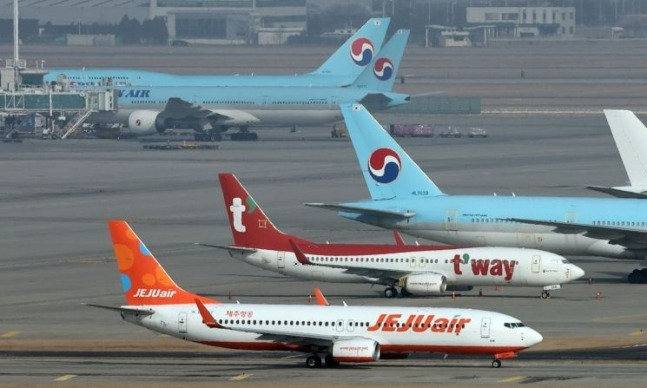Aerospace & Defense
Three provincial airports in S.Korea offer direct flights to Mongolia
The two countries have agreed on service to and from Ulaanbaatar three times a week from such airports
By Feb 20, 2023 (Gmt+09:00)
1
Min read
Most Read
LG Chem to sell water filter business to Glenwood PE for $692 million


Kyobo Life poised to buy Japan’s SBI Group-owned savings bank


KT&G eyes overseas M&A after rejecting activist fund's offer


StockX in merger talks with Naver’s online reseller Kream


Mirae Asset to be named Korea Post’s core real estate fund operator



South Korea is expanding its number of flight connections with Mongolia.
The Ministry of Land, Infrastructure and Transport on Sunday said it agreed with the Mongolian government to expand the number of flights linking both countries and launch new routes departing from provincial airports in South Korea.
In a meeting from Thursday to Friday with the Civil Aviation Authority of Mongolia in the Mongolian capital of Ulaanbaatar, the ministry reached an agreement on these measures.
The two sides decided to open three weekly flights of 600 seats each departing from three provincial airports in South Korea to Chinggis Khan International Airport in the Mongolian capital and double the number of Busan-Ulaanbaatar flights from three to six times a week.
The ministry will designate the airports and airlines to run routes to and from Mongolia.
The seat capacity of Incheon-Ulaanbaatar routes will also be expanded. During the peak season of June through September, the limit will be raised from 5,000 per week to 6,000 and from 2,500 to 3,350 during the off-season.
The bilateral agreement allows 22 roundtrip flights per week from June to September on Mongolia routes and 12 from October to May in the following year.
Before the COVID-19 pandemic, Mongolia routes saw steady growth in demand not just among tourists but also students, entrepreneurs and workers.
In the second half of last year, the route had a relatively high occupancy rate of over 70%, with that of the peak season reaching 72.6% and that of the off-season 78.6%.
"In addition to the peak season, air operations have grown year-round to allow people from both countries to travel on their desired schedules and at reasonable fares," said Kim Young-kuk, director-general of the ministry's Aviation Policy Bureau. "Service at provincial airports will also contribute to reviving the economies of their respective regions."
Write to Ohsang Yoo at osyoo@hankyung.com
More to Read
-
 Business & PoliticsKT Group signs MOUs with Mongolian firms to explore joint opportunities
Business & PoliticsKT Group signs MOUs with Mongolian firms to explore joint opportunitiesFeb 15, 2023 (Gmt+09:00)
1 Min read -
 Supply chainS.Korea, Mongolia discuss stabilization of mineral supply chains
Supply chainS.Korea, Mongolia discuss stabilization of mineral supply chainsFeb 15, 2023 (Gmt+09:00)
1 Min read -
 Food & BeverageS.Korea's fast-food chain Lotteria opens 3rd store in Mongolia
Food & BeverageS.Korea's fast-food chain Lotteria opens 3rd store in MongoliaDec 08, 2022 (Gmt+09:00)
1 Min read -

Comment 0
LOG IN


